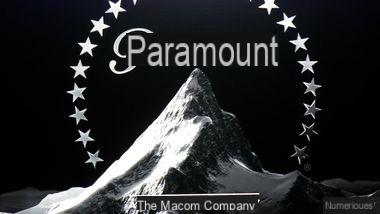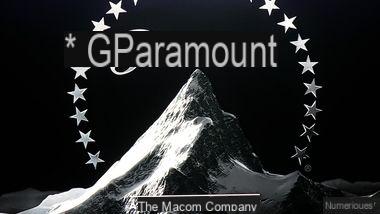Like every year, LG is renewing its range of Oled televisions. The LG C1 thus takes the place of the LG CX with a few changes such as a new processor, a new interface or a completely revised remote control.
Presentation
The LG Oled 55C1 takes up the design of the 55CX from 2020 and swaps the LG Alpha 9 Gen 3 processor for the new LG Alpha 9 Gen 4 AI 4K model, a slight evolution with a little artificial intelligence to improve content detection and their scaled, with a power gain of 15%. It also inherits the new version of webOS 6.0 including the Game Optimizer menu which groups information relating to the video game, as well as the slightly revised Magic Remote. The Oled panel still displays an Ultra HD definition, and on paper, it is identical to that of the LG 55CX from last year. Remember that only the LG G1 has the new, brighter Oled panel produced by LG Display. We did note a higher brightness on the LG 65G1 that we tested, but the LG 55C1 has some surprises in store for us on this point.
The LG C1 is in the middle of the Oled LG range, between the B1 which is content with two HDMI 2.1 inputs (four for the C1) and the LG G1 with its Oled Evo panel. The LG 55C1 is sold around 1700 €. It is also available in 48, 65 and 77 inch versions at respective prices of around 1300, 3000 and 4000 €. Small detail, this television is available with a black or white rear plastic. We tested the white version.
All brightness and colorimetry measurements mentioned in this article were performed with a SpectraCal C6-HDR probe and CalMAN Ultimate software.
Image quality
New sub-pixels for the C-series.
This LG 55C1 does not use the Oled panel of the 55CX of 2020 and opts for an Oled model already seen on the Philips OLED804. Its operation remains identical: each pixel is made up of four sub-pixels (one green, one red, one blue and one white). The white and red sub-pixels are larger in order to improve the maximum brightness of the panel, while maintaining a color temperature close to 6500 K. As is now a habit with OLED technology, the viewing angles are excellent. We measured a loss of brightness of only 17% at 45° and there is no variation on the black which is absolute. In comparison, the brightness loss is 35% to 40% on the best LCD TVs (Samsung QE75Q950TS and Sony Bravia KD-65XH9505) and 70% on entry-level and mid-range models.
Compare photos Contrast: Greater than 200:000 Gamma curve - average 1 Color temperature curve - average 2.4 K Delta E SDR 6 (Filmmaker mode - Oled brightness 630)
As often on LG Oled TVs, the Filmmaker mode offers simply perfect colors. We measured an average delta E of 1,3, well below the threshold of 3 below which the human eye no longer perceives any difference between the colors displayed on the screen and those expected. No color exceeds a delta E of 3. The levels of gray represented by the gamma curve are simply perfect with an average value of 2,4 based on the reference value. The color temperature is excellent with a perfectly stable curve over the entire spectrum and an average of 6630 K very close to the reference value (6500 K). Finally, as always with Oled technology, the contrast is considered infinite. Indeed, even with white calibrated at 150 cd/m², black is measured at 0 cd/m². This contrast is still impressive and allows you to enjoy all the nuances, even in complete darkness.




Difficult to observe the gain provided by the α9 (Alpha 9) Gen 4 AI processor. The scaling engine – identical to that of 2020 – is still as efficient as ever. It displays Full HD content on the Ultra HD panel respecting the original source without creating artifacts. It is possible to improve the rendering by increasing the sharpness. Since the arrival of the α9 processor, the motion compensation engine is excellent. The TruMotion can still be controlled by hand by managing jerkiness (De-Judder) for 24/25/30 Hz content and blurring (De-Blur) for 50/60 Hz content. system for inserting black images that can deceive retinal persistence (Oled Motion Pro). The latter now works without flickering in “low” or “medium” mode.
HDR
Compare photos HDR Colorimetry. Average Delta E measured at 2 EOTF curve in HDR10, 10% window. DCI-P3 color space coverage: 95% Rec.2020 color space coverage: 69% The HDR luminance curve, 10% window with maximum brightness measured at 740 cd/m².
The HDR rendering is simply excellent. With a signal at 10 cd/m², the reference EOTF curve (in yellow) is perfectly followed up to 000% luminance before the television smooths the curve to its maximum capacity. With an average delta E measured at 70, the colors can be considered faithful to those sent by the source.
The big surprise comes from the peak brightness measured at 740 cd/m². Compared to last year, the gain is impressive since the LG 65CX was content with 665 cd/m². The LG 55C1 teases the LG 65G1 with the Oled Evo panel and its peak brightness of 782 cd/m². It is so close that the price difference is difficult to justify for the latter. This peak is still far from that offered by the Panasonic 65HZ2000 and its 951 cd/m². The brightness peak of the LG 55C1, combined with the infinite contrast of the Oled panel, still allows you to display a very dynamic image that highlights HDR content, especially since the TV perfectly covers the color spectrum of the DCI-P3 space, widely used by cinema.
Video Games
Afterglow 0,1 ms Ret. display 9,6msIn game mode, input lag is measured at 12,5ms, but LG is introducing a new Boost option this year through the Game Optimizer panel that can reduce input lag to just 9,6ms ( for signals using VRR). There's less than a frame delay from the 60Hz source, so there's no lag between controller action and on-screen impact. In terms of persistence, Oled technology is still unrivaled on the market with a time of less than a millisecond, whereas the best LCD televisions cannot do better than 11 ms.
Game mode requires some tweaking to get the perfect picture. The most important thing is to reduce the color temperature to a minimum (Image > Advanced settings > Color > White balance > Color temperature > Warm 50). Done, the TV delivers a perfect image, even in Game Optimizer mode. Whether in SDR or HDR, the delta E is always less than 3.
Like the LG CX, the LG 55C1 retains four HDMI 2.1 inputs compatible with all the features of this new standard, namely 4K streams at 120 Hz, VRR (Variable Refresh Rate) which avoids image tearing and jerks , ALLM (Auto Low Latency Mode) which allows automatic switching to game mode when a console is detected, or eARC for lossless audio feedback. LG televisions are also the only ones to be compatible with G-Sync – Nvidia-style VRR – and are compatible with FreeSync Premium (not Pro, because LG prefers that the television manages the HDR layer).
clouding
The heat signature is used to distinguish elements on the home page.
As with all OLED televisions on the market, each pixel is managed individually and therefore there is no clouding. Banding effects (horizontal or vertical stripes) are also absent. The homogeneity of the brightness on the panel is excellent: we measured the average difference in homogeneity of the white on the whole of the 55 inch panel at only 3%. This very good result is again explained by the use of OLED technology.
A quick word on the tagging issues that some users encounter. Very extensive tests have shown that the marking of modern OLED panels is limited during everyday use. On the other hand, continuous news channels displaying banners with saturated colors (red, blue or green) can cause problems, especially when the brightness is pushed to the maximum. This risk exists and cannot be totally ignored. It is essential to turn off the television using the remote control and it is not recommended to disconnect it completely from the power supply. Indeed, the television performs maintenance operations on the screen when it is on standby in order to preserve uniformity and precisely to avoid marking problems. Since 2020, LG has used a system for detecting fixed logos which automatically reduces the brightness of these in order to limit the risks. A wallpaper is also triggered very quickly (1 min) when it detects a still image.
Ergonomics
The LG 55C1 with its central stand.
The LG 55C1 is the copy of the 55CX of 2020. The finishes are neat.
The mention LG Oled on the foot.
It still uses a central aluminum stand which improves the audio rendering.
Measure of reflectance expressed as a percentage relative to a mirror.
If the LG Oled 55C1 slips to the top of the ranking of Oled televisions in terms of quality of the anti-reflective filter, the latter is identical to those of 2019 and 2020 and filters a good part of the reflections. Only Samsung remains the benchmark in the field with its high-end Qleds such as the QE75Q950TS and QE65Q800T.
The television from the front and in profile.
The central leg sports a contained depth of 25,1 cm. This TV is therefore comfortable on our reference unit measuring 160 x 40 cm. On the other hand, the foot overflows quite a bit at the back of the device and it is thus impossible to stick it as close as possible to the wall.
The back of the TV.
In this white version, the back of the LG 55C1 is completely covered in white plastic. The stand has a basic cable management system.
The connection.
This television has four HDMI 2.1 inputs, three USB ports, an Ethernet port, an optical digital audio output, a headphone output, a PCMCIA (CI+ Common Interface) port, a rake antenna connector and a satellite. It also features a DVB-T/T2, DVB-S/S2 and DVB-C tuner (TNT, satellite and cable), as well as 802.11a/b/g/n/ac wifi and Bluetooth 5.0 for connection with a wireless audio device (headphones or speaker).
The new home screen introduced by webOS 6.0.
With webOS 6.0, the home page now displays recommended content, as well as installed apps. There is also some information relating to the television (devices connected via HDMI and USB, smartphone, etc.). The main applications are available (Netflix, YouTube, Amazon Prime, Google Films, BeIn, Spotify, OCS or Deezer and My Canal since May 2021). Apps launch quickly and stay in memory for quick recovery. This version 6.0 of webOS especially purifies the settings menu, reduced and customizable. The Sports Alert function allows – after having informed his favorite team – to receive notifications before the start of the match, when a goal is scored, or a balance sheet at the end of the match. WebOS still embeds the voice assistant Google Assistant and Alexa. The two assistants are accessible directly via dedicated buttons on the remote control. The TV is also compatible with Google Cast, HomeKit and AirPlay 2. Finally, Magic Explorer allows contextual searches based on the content on the screen (actor, director's name, review, etc.).
Start 12 s Shutdown 2 s Recovery 5 sIn terms of responsiveness, webOS is still a benchmark, as is Samsung's Tizen system. The TV starts up in 12s (slightly slower than last year at 6s) and wakes up from standby in 4s. On the other hand, switching off now displays a giant LG logo which delays the standby time to 2s.
The new Magic Remote with an NFC chip.
The new Magic Remote maintains a very low center of gravity that allows it to fit effortlessly in the palm of the hand, the gyroscope to control the pointer and the integrated microphone allowing voice searches. It sports a new design that is a little more current. The big news is the integration of NFC for quick pairing with a smartphone to send images to the TV (as long as you have an Android smartphone with the LG Things app). There are also keys dedicated to the most famous streaming services (Netflix, Prime Video, Disney + and Rakuten TV), as well as direct access to Google Assistant and Alexa.
Audio
LG hasn't upgraded its audio system since last year. The LG 55C1 still has two speakers and two subwoofers with a total power of 40 W. This system delivers very good sound for a television. We still perceive a slight characteristic dip between 5500 and 9000 Hz. Overall, the sound remains well above average, with bass that is very present. To do better, it will be necessary to equip yourself with a quality sound bar.
In 2021, LG introduces the feature of automatic sound volume leveling between different sources to minimize variations when switching from one source to another. The television is also WiSA compatible, which allows the transfer of 24-bit 48/96 kHz audio streams wirelessly over six channels (5.1) with reduced latency.
The frequency response to 79 dB (A).
Consumption
With white calibrated at 150 cd/m², the LG 55C1 consumes 77 W on our test chart, i.e. a relative consumption of 92,3 W/m² lower than the average consumption of the TVs tested (100 W/m²). This TV still consumes more power than LCD models. Thus, a TV with an Edge-Led backlighting system (a single LED bar at the base) like the Samsung QE65Q60R is content with 66,1 W/m², while the Sony KD-65XG8505 — the most economical in our comparison — drops to 55,8 W/m². Standby consumption is always less than 1W.
| Actual contrast: | Infinite |
| Black: | 0 cd / m² |
| Gamma quality: | Zones |
| Delta E: | 1,3 |
| Slab homogeneity deviation: | 3% |
| Viewing angles: | Zones |
| Consumption: | 77 W |
Highlights
Image quality.
Excellent colorimetry in HDR.
Increased peak brightness (interest of the G1 model?)
Mode Filmmaker.
Infinite contrast.
Viewing angles.
Always performing α9 processor.
Efficient Oled Motion Pro system.
Responsiveness of Oled technology, excellent display delay.
HDMI 2.1 compatibility (VRR, ALLM, eARC), FreeSync and G-Sync.
Dolby Vision IQ.
Weak points
Remote not backlit.
Brightness peak in HDR mode still lower than that of the best LCD TVs.
Conclusion
Note globale
It's flawless for the LG 55C1 which, like its predecessor, is one of the most successful TVs on the market. It displays a perfectly calibrated image in SDR and HDR, very wide viewing angles and infinite contrast. The surprise comes from the rising peak of brightness which rivals that of the LG G1, which nevertheless has the Oled Evo panel. The LG 55C1 will suit both movie buffs and video game enthusiasts thanks to its flawless responsiveness and the integration of essential functions to enjoy the latest game consoles (HDMI 2.1, 4K120, VRR). Certainly one of the best Oled TVs on the market.
Sub Notes Read more

























